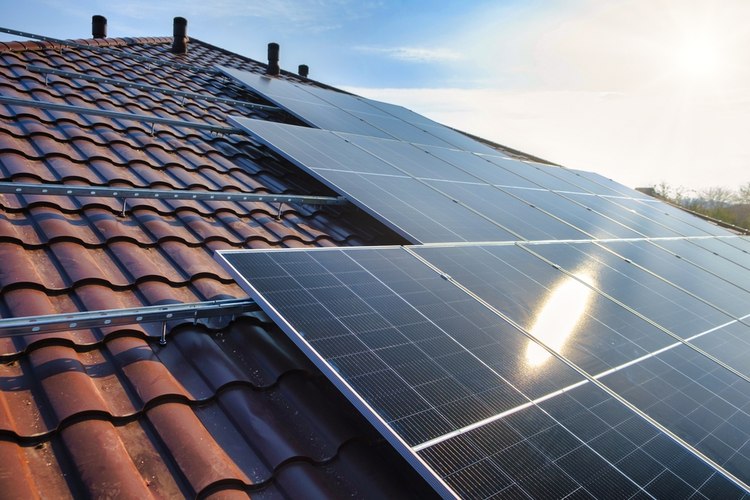Unlocking Savings and Sustainability: Why Solar Power Panels Are Essential in 2025
As we approach 2025, the importance of solar power panels in our energy landscape continues to grow. With advancements in technology, increasing environmental awareness, and evolving economic factors, solar energy is becoming an indispensable part of our sustainable future. This article explores why solar power panels are not just a trend but a necessity in 2025, offering both financial benefits and environmental advantages for homeowners and businesses alike.

What is the economic impact of residential solar panels in 2025?
The economic impact of residential solar panels in 2025 is expected to be significant. As technology improves and production scales up, the cost of solar panels continues to decrease, making them more accessible to homeowners. In 2025, the return on investment for residential solar installations is projected to be even more attractive than it is today.
Homeowners can expect to see substantial reductions in their electricity bills, with many achieving complete energy independence. The payback period for solar panel systems is likely to shorten, potentially to as little as 5-7 years in many regions. Moreover, solar panels can increase property values, making them a smart long-term investment for homeowners.
How do environmental benefits link to solar power adoption?
The environmental benefits linked to solar power adoption are numerous and crucial in the fight against climate change. By 2025, the widespread use of solar panels is expected to significantly reduce greenhouse gas emissions. Solar energy produces no direct emissions, helping to decrease air pollution and improve overall air quality in urban areas.
Furthermore, solar power reduces reliance on fossil fuels, which are major contributors to global warming. The adoption of solar energy also helps conserve water resources, as solar panels require minimal water for maintenance compared to traditional power generation methods. As more households and businesses switch to solar, the cumulative environmental impact becomes increasingly substantial, contributing to a cleaner, more sustainable planet.
What technological advancements are transforming solar efficiency?
Technological advancements are rapidly transforming solar efficiency, making solar panels more effective and attractive for widespread adoption. By 2025, we can expect to see several innovations in full swing:
-
Perovskite solar cells: These promise higher efficiency and lower production costs compared to traditional silicon cells.
-
Bifacial solar panels: Capable of capturing sunlight from both sides, these panels significantly increase energy generation.
-
Solar skin design: Aesthetic improvements allow solar panels to blend seamlessly with roof designs, addressing concerns about visual appeal.
-
Advanced energy storage: Improvements in battery technology enable more efficient storage and use of solar energy, even during non-sunlight hours.
-
Smart solar technology: Integration with AI and IoT devices optimizes energy production and consumption in real-time.
These advancements are set to make solar panels more efficient, durable, and attractive to consumers, further driving adoption rates.
What are common misconceptions surrounding solar power in 2025?
Despite the growing popularity of solar power, several misconceptions persist. In 2025, it’s crucial to address these myths to promote wider adoption:
-
Solar panels only work in sunny climates: Modern panels can generate significant power even in cloudy or cold conditions.
-
Solar energy is too expensive: With technological advancements and incentives, solar power is becoming increasingly cost-effective.
-
Solar panels require high maintenance: Most systems require minimal maintenance and have long lifespans.
-
Solar panels damage roofs: When properly installed, solar panels can actually protect and extend the life of a roof.
-
Solar energy is not reliable: With improved storage solutions, solar power can provide consistent energy, even at night or during inclement weather.
Educating the public about these misconceptions is vital for increasing solar adoption rates and realizing the full potential of this clean energy source.
How are policy shifts and incentives influencing solar popularity?
Policy shifts and incentives play a crucial role in influencing solar popularity. By 2025, we can expect to see even more supportive policies and incentives driving solar adoption:
-
Extended tax credits: Many governments are likely to continue or expand tax incentives for solar installations.
-
Net metering policies: These allow homeowners to sell excess energy back to the grid, making solar more financially attractive.
-
Building codes: Updated regulations may require new constructions to incorporate solar-ready designs or even mandate solar installations.
-
Community solar projects: Policies supporting shared solar initiatives will make solar accessible to those who can’t install panels on their own properties.
-
Corporate incentives: Businesses may receive additional tax breaks or grants for large-scale solar adoption.
These policy shifts and incentives are expected to significantly boost solar popularity, making it an increasingly attractive option for both residential and commercial applications.
What are the costs and options for solar panel installation in 2025?
When considering solar panel installation in 2025, it’s important to understand the costs and options available. While prices continue to decrease, the initial investment can still be significant. However, the long-term savings and environmental benefits often outweigh the upfront costs.
Here’s a comparison of estimated costs and features for different solar panel systems in 2025:
| System Size | Estimated Cost | Annual Energy Production | Suitable For |
|---|---|---|---|
| 3kW | $6,000-$9,000 | 3,600-4,800 kWh | Small homes, apartments |
| 5kW | $10,000-$14,000 | 6,000-8,000 kWh | Average-sized homes |
| 10kW | $18,000-$25,000 | 12,000-16,000 kWh | Large homes, small businesses |
| 20kW | $35,000-$50,000 | 24,000-32,000 kWh | Commercial properties |
Prices, rates, or cost estimates mentioned in this article are based on the latest available information but may change over time. Independent research is advised before making financial decisions.
These estimates include the cost of panels, inverters, mounting equipment, and installation. Factors such as location, roof condition, and local incentives can significantly impact the final price. It’s worth noting that many financing options, including solar loans and leases, are available to help manage the upfront costs.
In conclusion, solar power panels are poised to become an essential part of our energy infrastructure in 2025. The combination of economic benefits, environmental advantages, technological advancements, and supportive policies makes solar an attractive and necessary option for a sustainable future. As misconceptions are dispelled and costs continue to decrease, we can expect to see solar panels becoming a standard feature in homes and businesses worldwide, playing a crucial role in our transition to clean, renewable energy.




